Independent Watchmaking
Simon Brette Makes His Debut with the Chronomètre Artisans Souscription
The name Simon Brette might be unfamiliar to most, but the 35-year-old watchmaker has spent a decade behind the scenes at some of the most creative independent watch companies in Switzerland. Right after completing his engineering studies at Haute Ecole Arc Ingénierie in Le Locle, Simon joined Jean-François Mojon’s movement conception and development company Chronode where he spent next five years as a technical constructor working on some of the most ingenious calibres in modern watchmaking. Thereafter, he became a project manager for the avant-garde and now-defunct watch company MCT, where he was responsible for turning the brand’s time display innovations into a reality. He was soon hired by MB&F and was put in charge of overseeing and putting movement concepts into practice from R&D all the way through to production.

Simon Brette
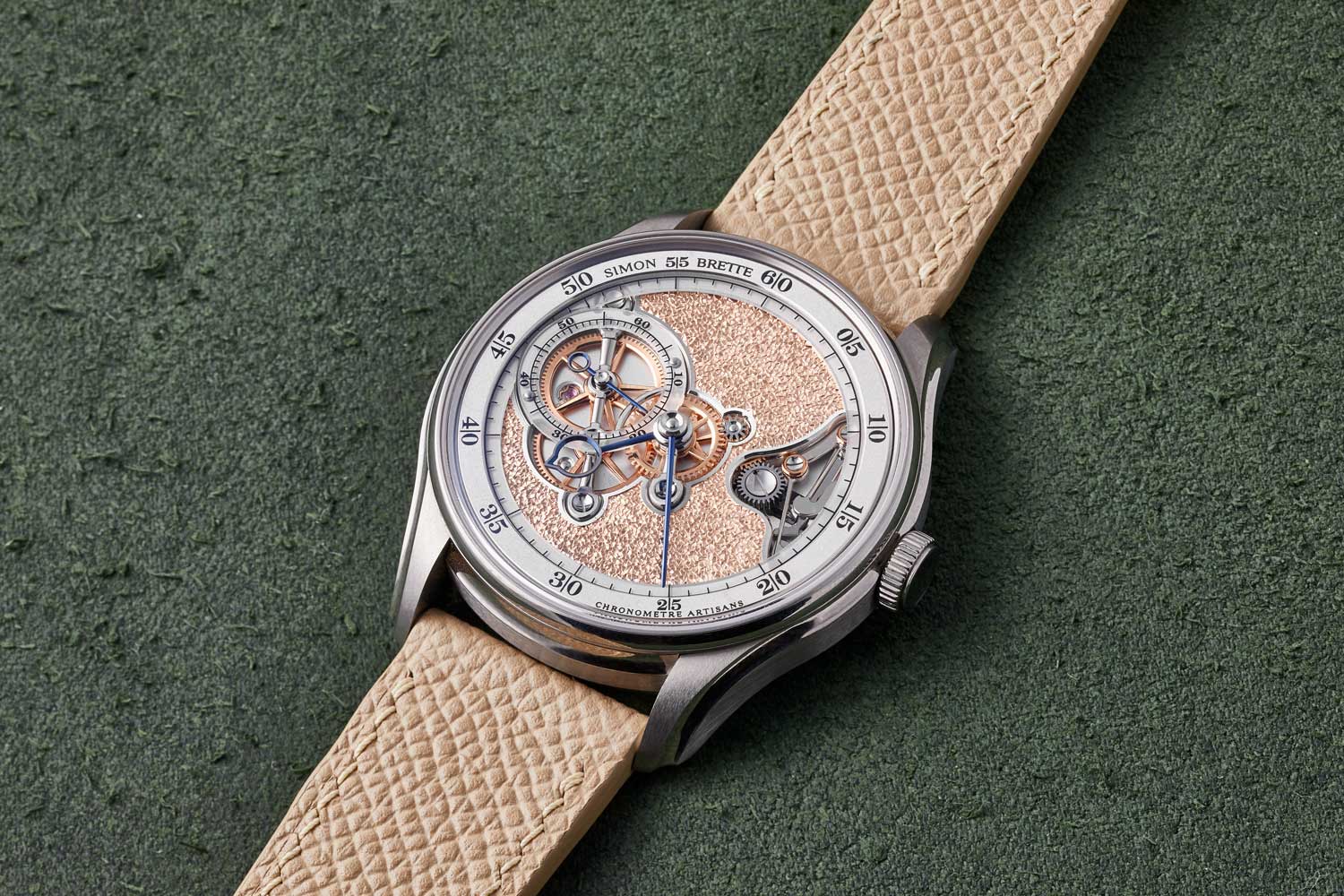
Chronomètre Artisans Souscription
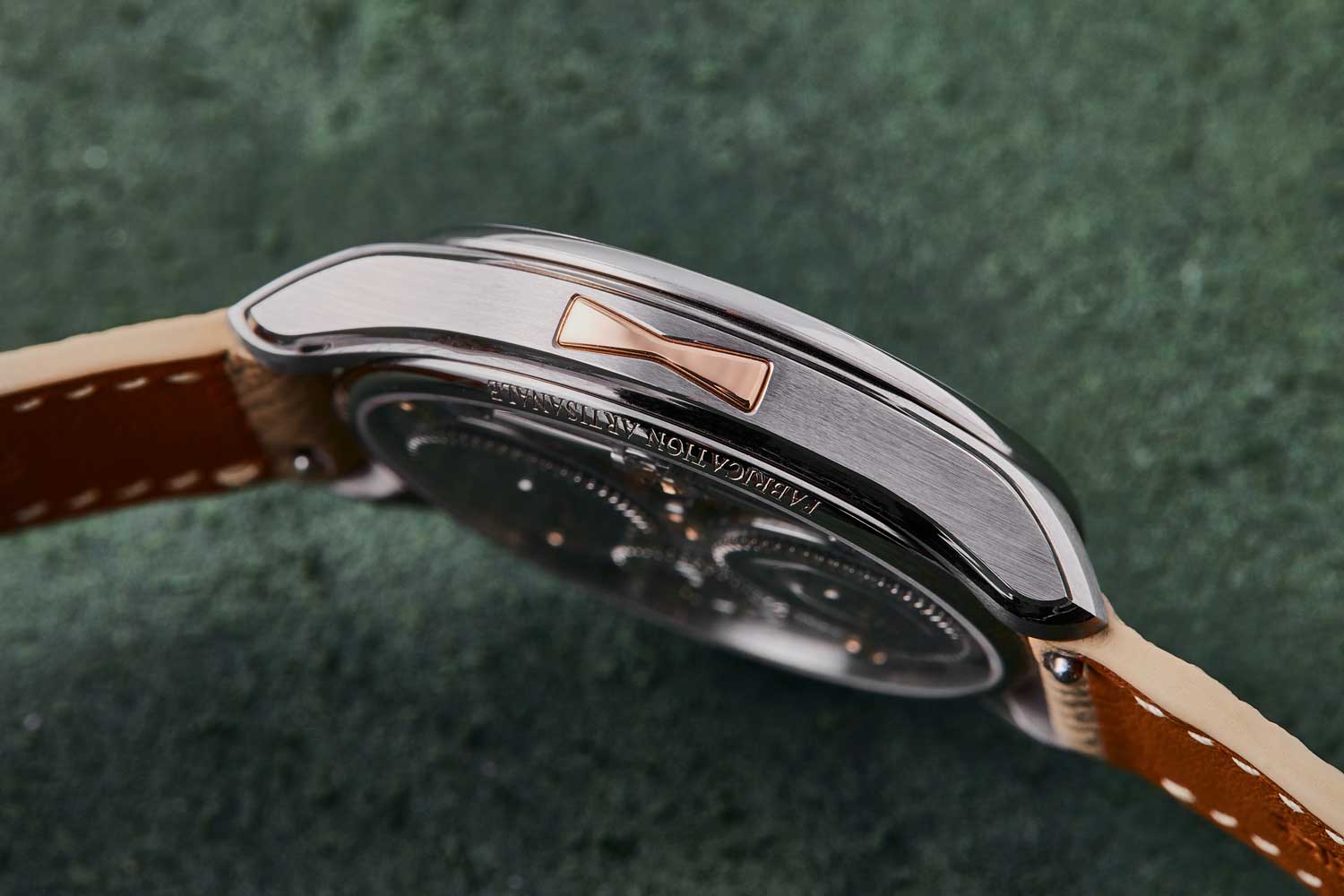
In a tribute to his carpenter father, a rose gold dovetail insert that resembles the joint his father often used in his carpentry work is embedded in the left side of the caseband
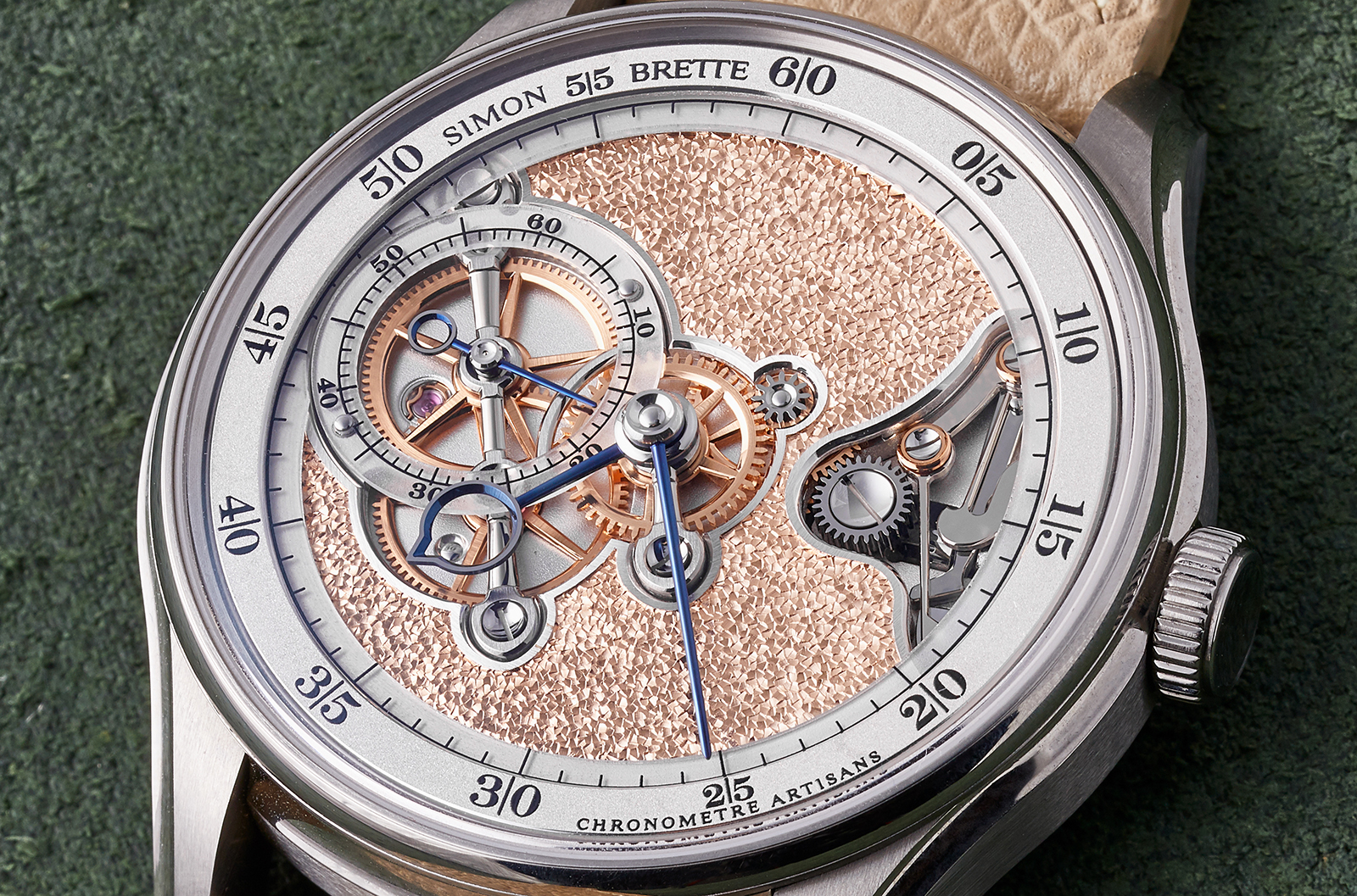
While the movement was designed with symmetry in mind, the dial has been asymmetrically open-worked, revealing the hour wheel, third and fourth wheels on the left and the keyless works in the opening on the right
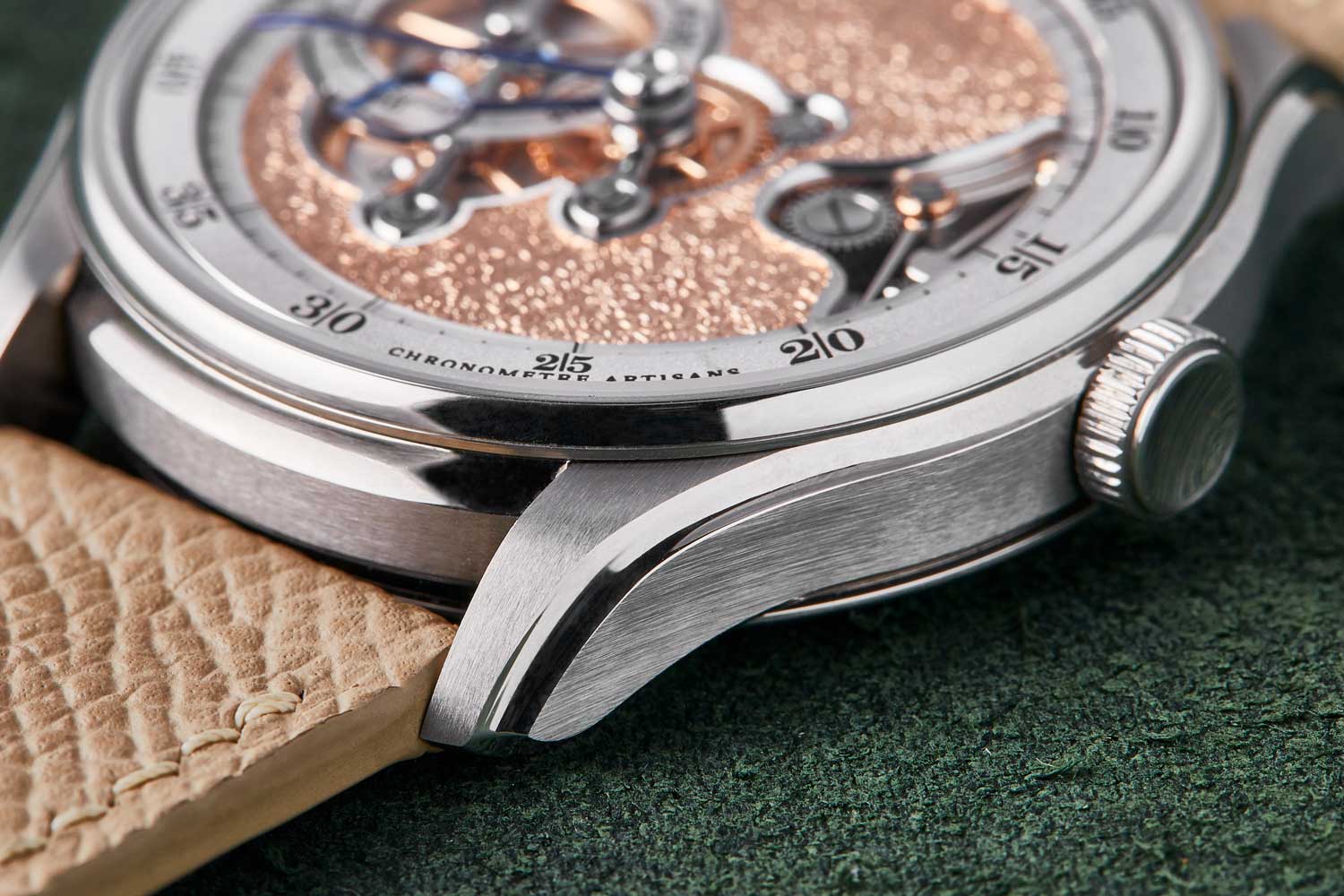
The satin-brushed flanks and top surfaces of the case are separated by a distinct, concave bevel
To minimize the parallax error and ensure optimal readability of the seconds, the small seconds hand made of blued steel is positioned on the same plane as the frosted sapphire sub-dial. Additionally, contrast is enhanced through a clever use of colours and decoration techniques across the main plate, bridges, wheels, dial and hands to further improve readability. The attention to detail is striking. All three hands are not only mirror-polished and rounded but each has its own hub that is bevelled and polished. The central hour hand is reminiscent of the Urban Jurgensen observatory hand designed by Derek Pratt but has been modified with a pointed tip, featuring an interior angle. While its cross section has a brushed finish, the top surface of the hand’s open section is mirror-polished, offering further evidence of the tremendous level of attention paid to the minutest detail.
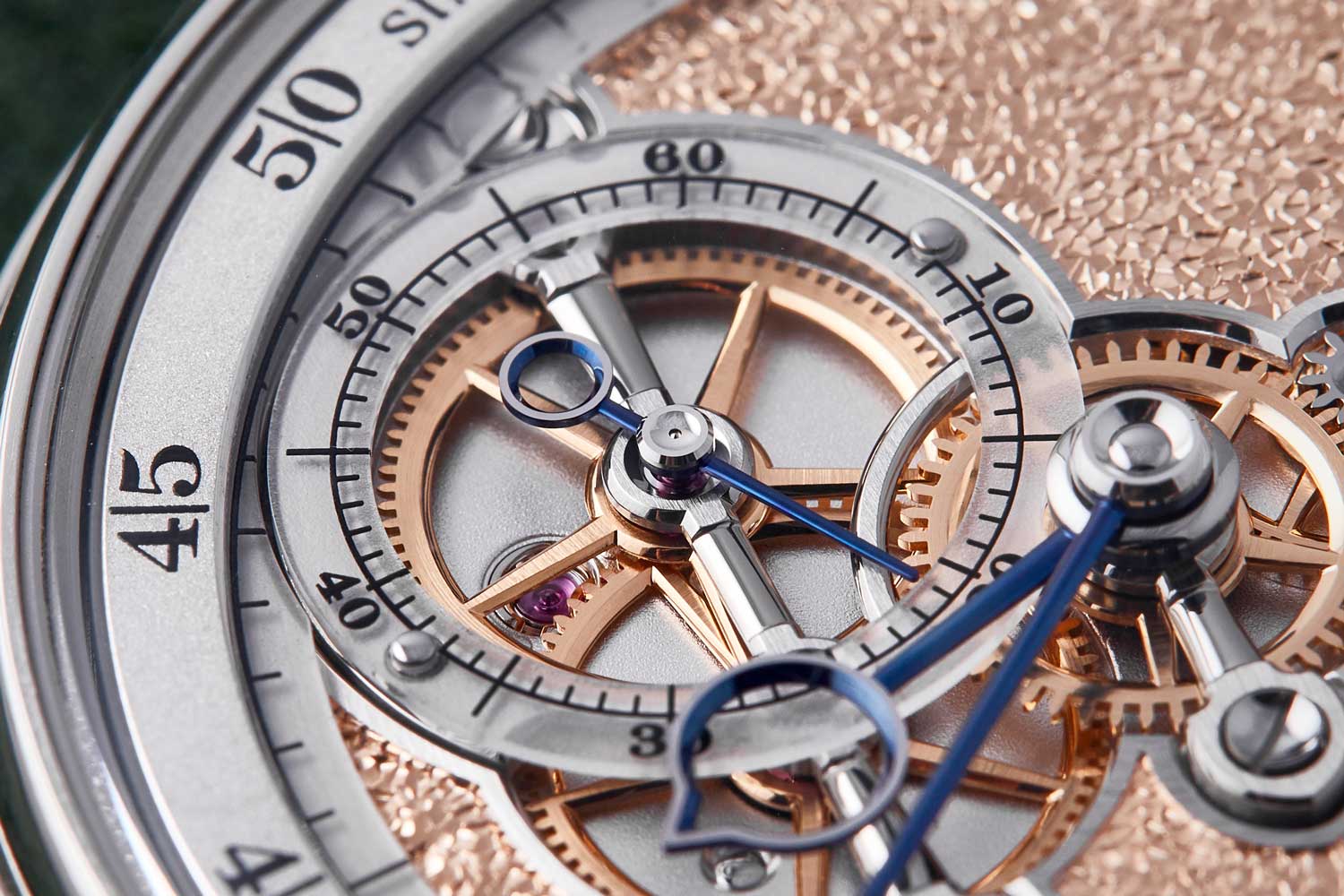
The wheels are finely finished with beveled, polished spokes and sharp internal angles
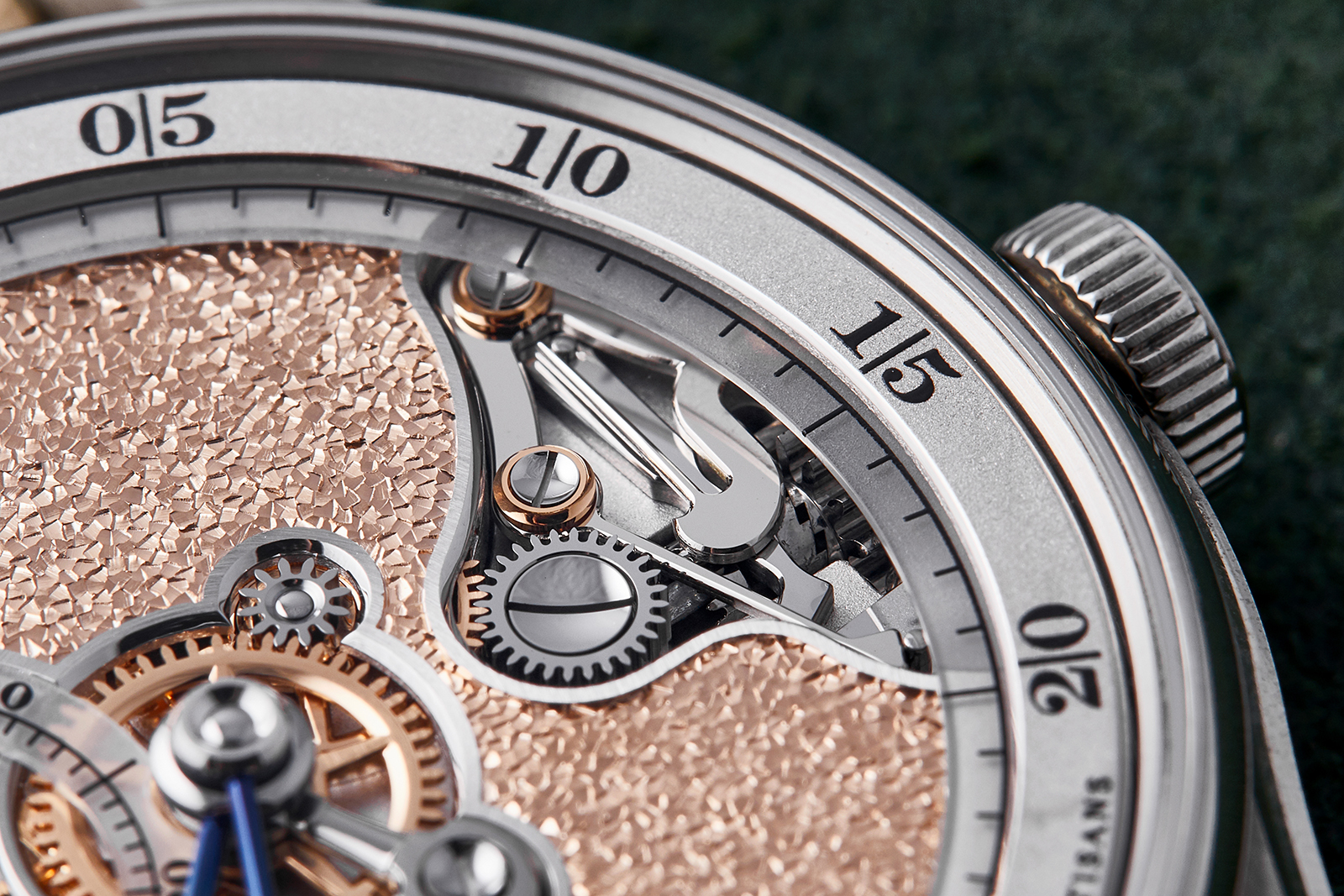
Even the most rudimentary part of the watch, the hand-setting mechanism has been transformed into a work of art. The levers and spring have been black-polished while the concave, polished screws are embedded in gold chatons
The dial itself is made of solid red gold and showcases a magnificent textural mosaic pattern, which Simon has likened to dragon scales. It was executed by Yasmina Anti, an independent engraver based in the village of Le Pont in the Vallee de Joux. The way in which the irregular, three-dimensional surface of the dial reflects light is quite unlike anything in person. It is bordered by an opaline chapter ring with five-minute numerals and a recessed frosted sapphire ring with minute markers.
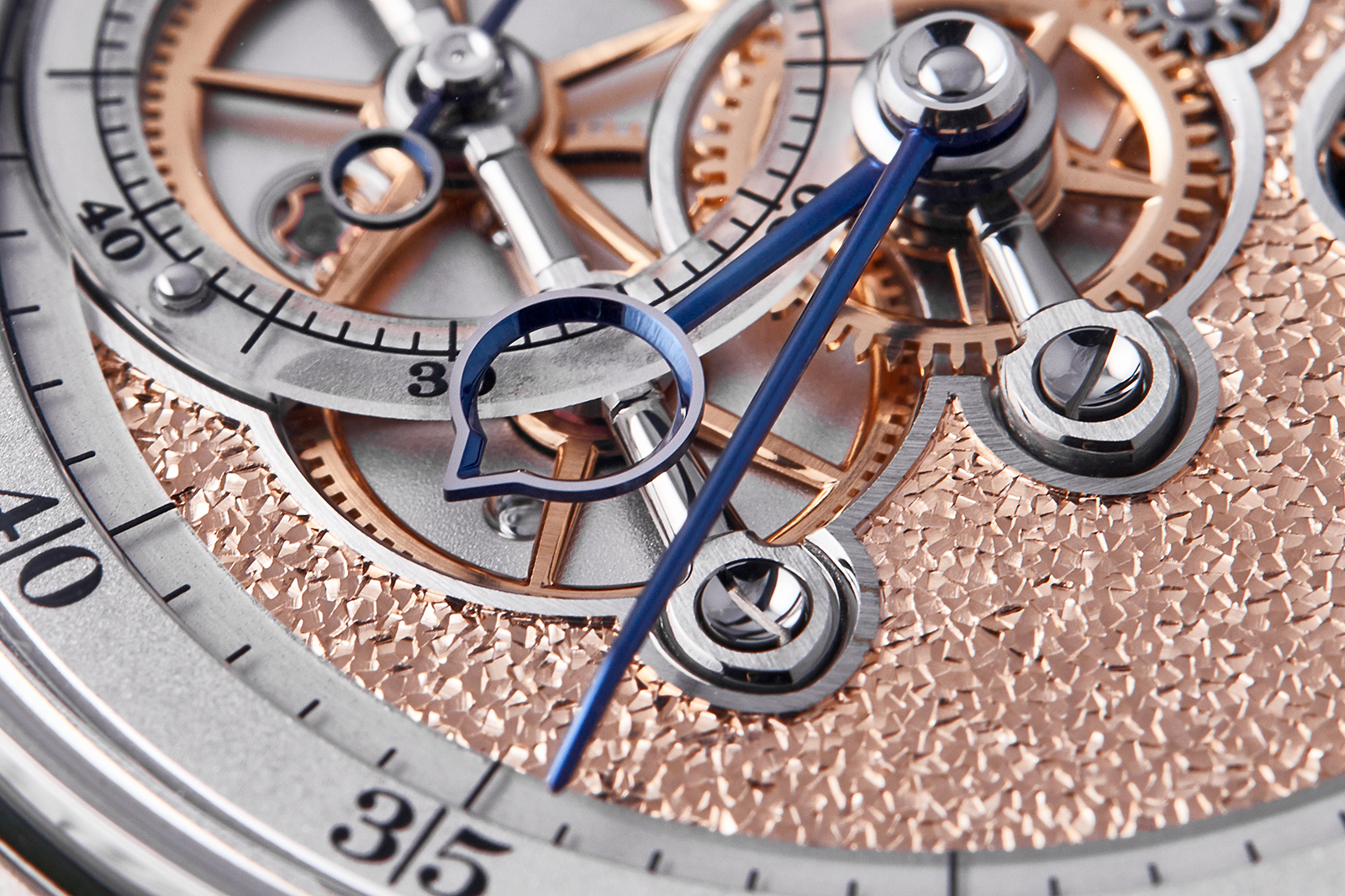
The beautiful flame-blued hour hand with a black-polished top surface
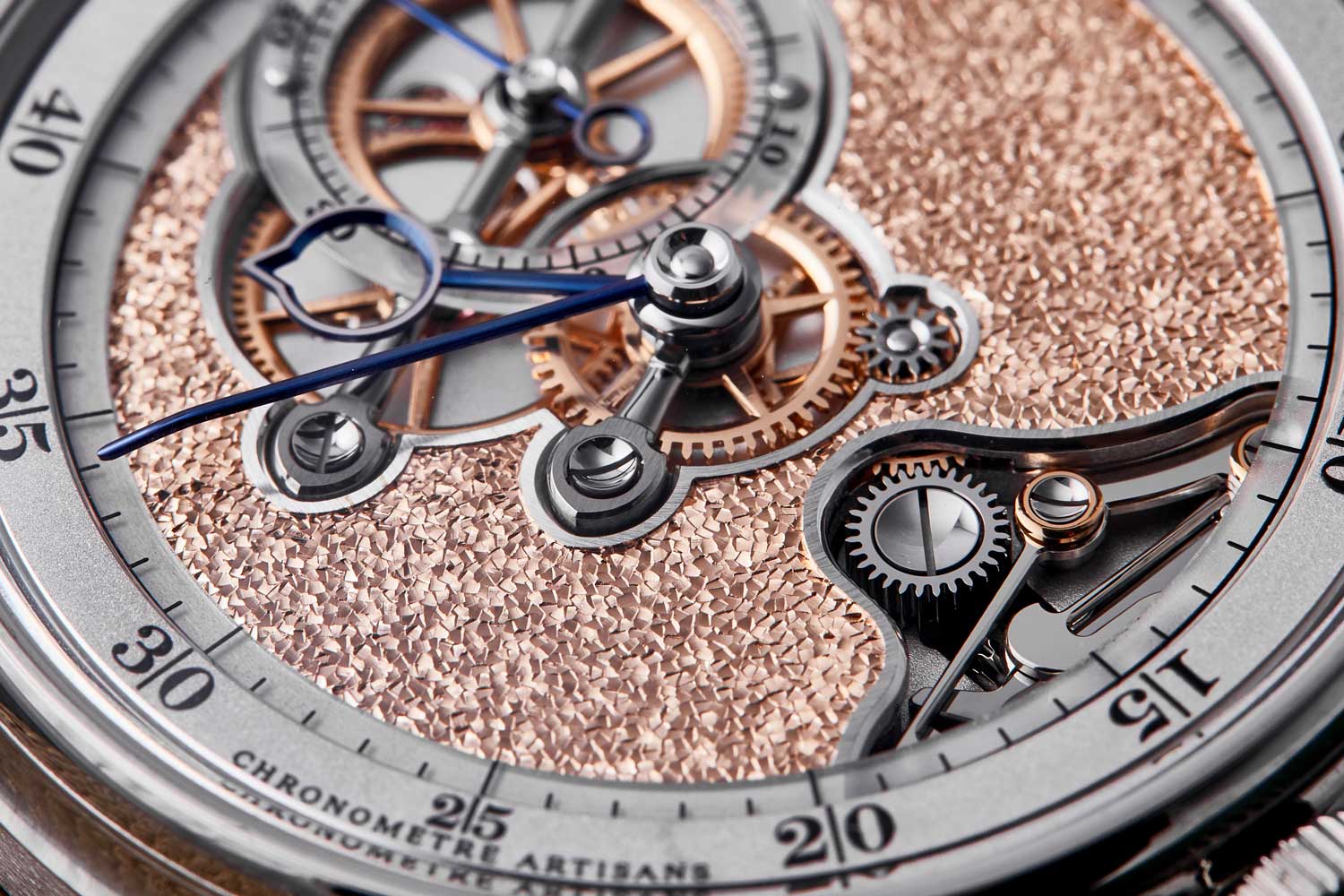

The Caliber SBCA featuring double barrels installed in a parallel configuration, a grande sonnerie-style winding click and a massive 2.5Hz balance wheel
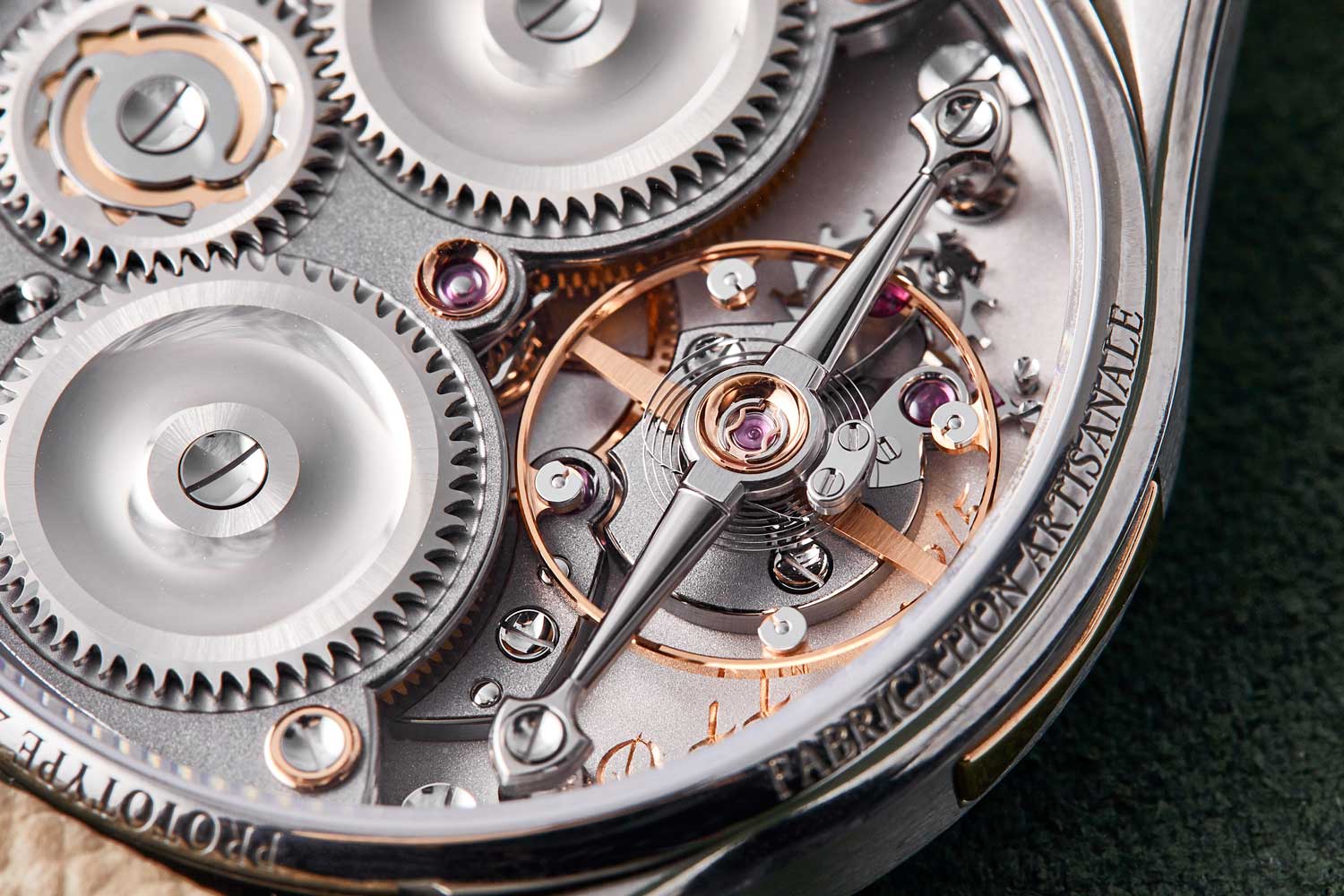
The free-sprung balance held in place by a beautiful mirror-polished and rounded titanium bridge while the escapement beneath is supported by a C-shaped bridge with polished steel caps
Ultimately, what the Chronomètre Artisans Souscription does exceptionally well is demonstrate the symbiotic relationship between movement design and finishing, emphasizing the importance of each in elevating the other to the level of art. As a debut watch, it is deeply impressive. As you might have guessed from the name, the Chronomètre Artisans Souscription is sold on a subscription basis. It is limited to 12 pieces with a price tag of CHF 50,000 and at the time of writing, all of which have already been spoken for. A production version will be unveiled at the end of the year. The fact that the watch pictured here is a prototype and is already so remarkable reinforces the point that Simon is one to watch.
Tech Specs
Movement: Hand-wound caliber SBCA; power reserve of 72 hours; 2.5Hz or 18,000vph
Functions: Hours, minutes, seconds
Case: 39mm x 10.5mm; Zirconium
Dial: 5N Red gold; engraved by hand; flame-blued hands
Strap: Textured calfskin and a folding clasp, as well as one with a tang buckle
Price: CHF 50,000 before taxes
Availability: 12 pieces, all allocated










